Photos: The Sonoran Desert in Bloom
Desert beauty
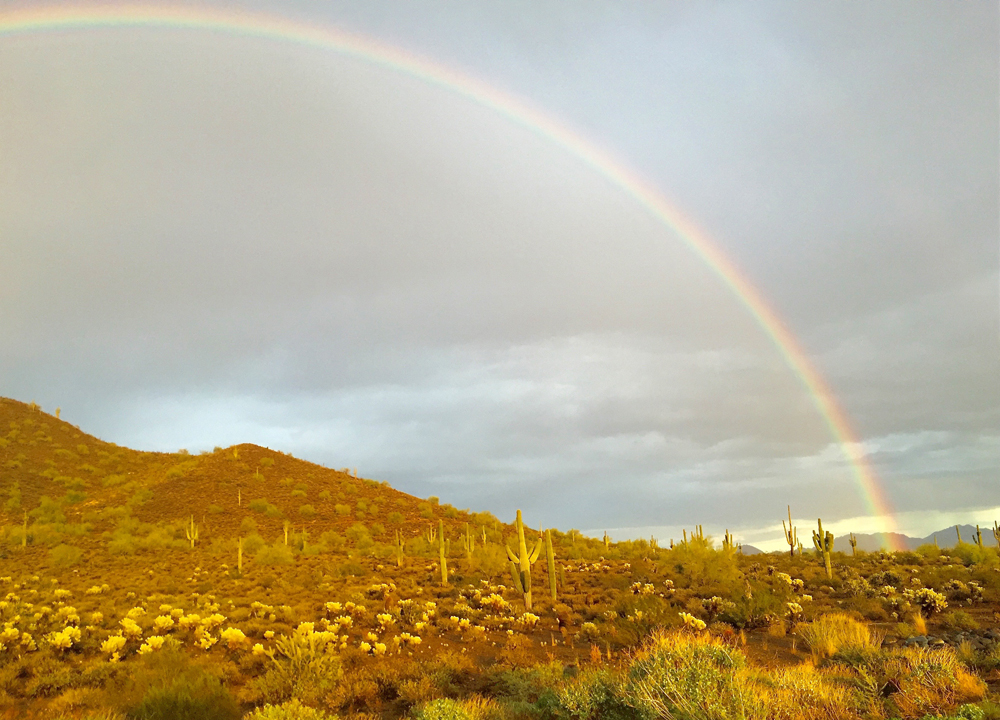
Although the extreme heat across the Sonoran Desert of northern Mexico and the southwestern part of the United States is about to return for another summer, the weeks leading up to summer in the desert are often its most beautiful of seasons. Wildflowers, shrubs, indigenous trees and cacti all bloom during this period of time, turning the brown desert landscape into a kaleidoscope of color.
Wildflowers
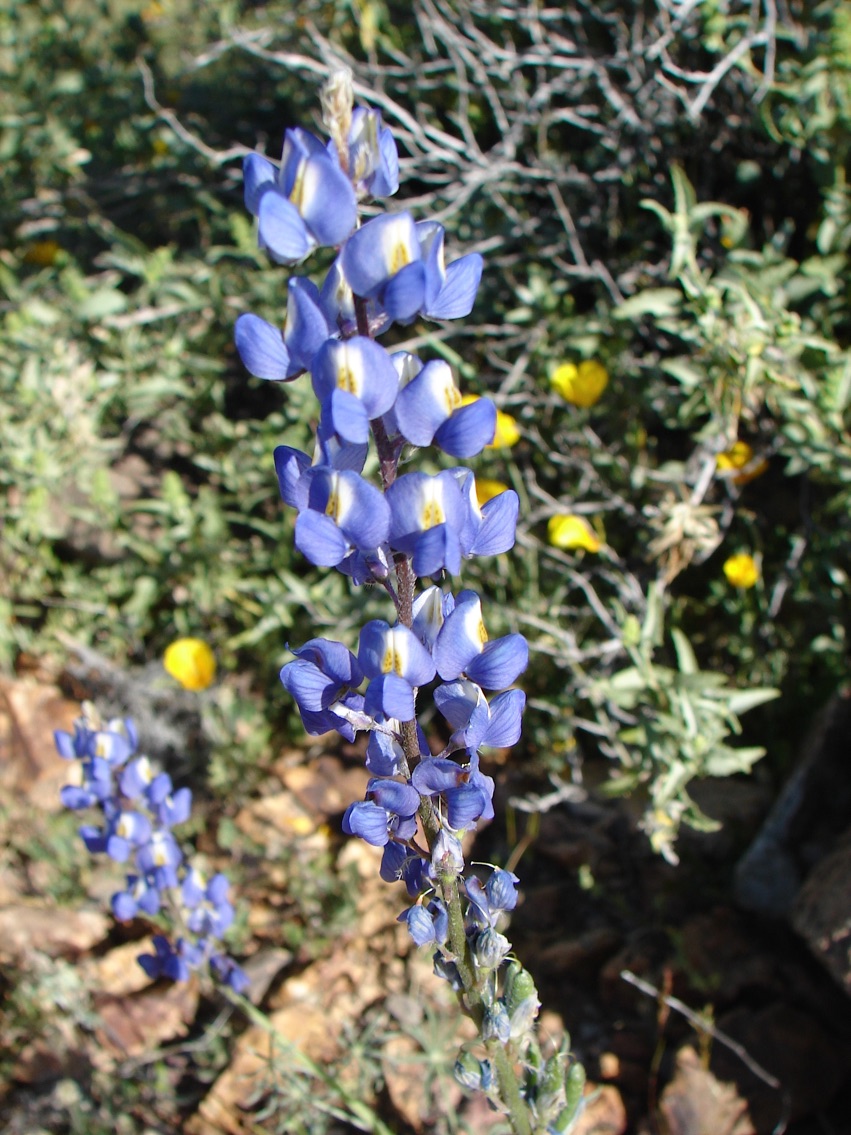
A wild variety of wildflowers tend to bring the first shower of color to the desert floor. They bloom in a rainbow of colors and can last upwards of six weeks if temperatures don't rise too soon and too high. Shown here is the desert lupine, Lupinus sparsiflorus —. a member of the pea family (Fabaceae) that is often found like a carpet covering the desert. The distinctive yellow spot will change to a reddish hue after pollination has occurred. When the ripened seed pods burst open, they scatter their many seeds to be dispersed by the wind.
Triangle-leaf bursage
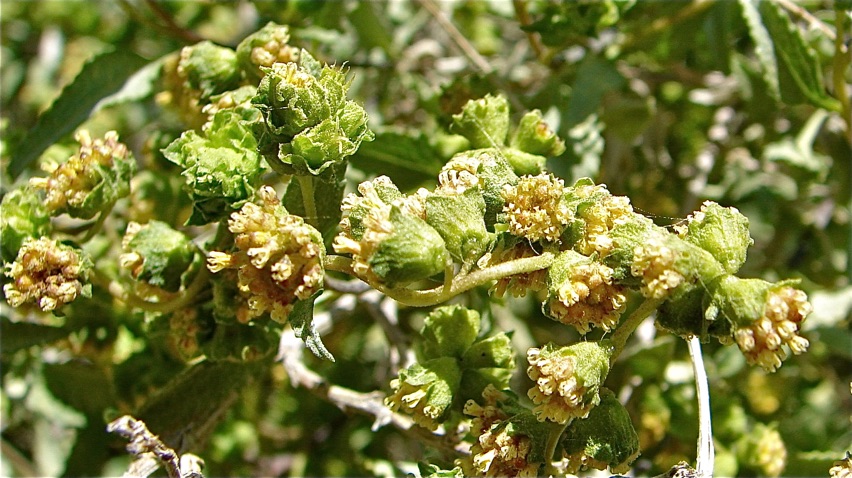
Shown here are the tiny, pale-yellow flowers of the triangle-leaf bursage, Ambrosia deltoidea. A member of the sunflower family (Asteraceae), bursage shrubs are the most common plants found in the Sonoran Desert. They thrive in areas of low precipitation and grow to about 1.5 feet (46 cm) high and 2 feet (61 cm) wide. Once the tiny flowers are pollinated, they produce a seed pod that resembles a hard, sticky burr that "hitchhikes" across the desert landscape attached to the fur of rabbits and coyotes. Bursage are the most pollen-producing plants of the Sonoran Desert, and when they are all blooming, result in many allergic reactions in humans. Bursage plants can live upwards of 50 years.
Desert milkweed
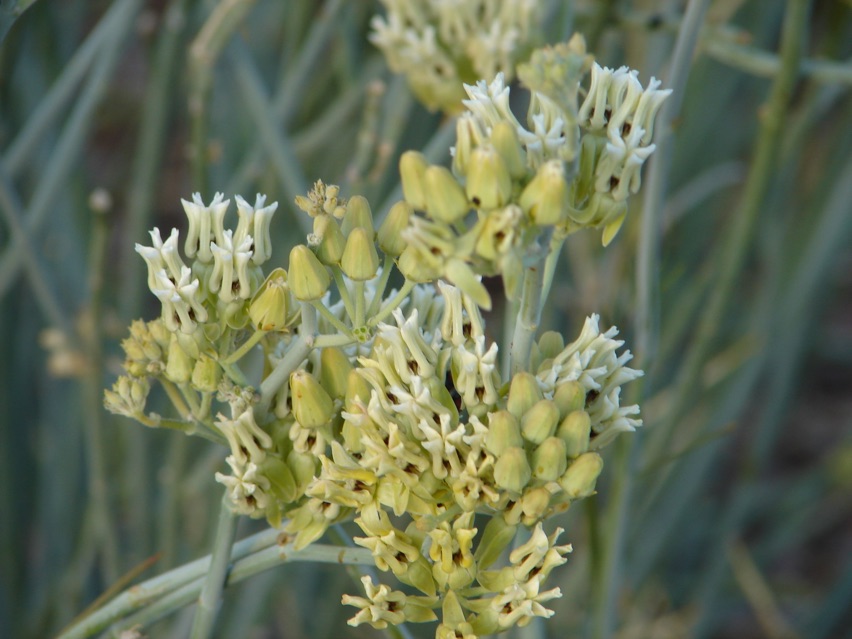
The bloom of the desert milkweed, Asclepias subulata, is most often found growing along or in the sandy washes of the Sonoran Desert. The tall slender stems can grow upwards of 4 feet (122 cm) high as the plant spreads outward to 3 feet (91 cm). Like all milkweed plants, a white sap will ooze from a broken stem. Both the monarch butterfly, Danaus plexippus, and the more common desert queen butterfly, Danaus gilippus, will feed and deposit eggs on the desert milkweed plant. After the flowers are pollinated, they will produce a 3-inch-long (8 cm) ornamental seed pod that splits open when ripe, releasing a whitish fluff of seeds.
Brittlebush
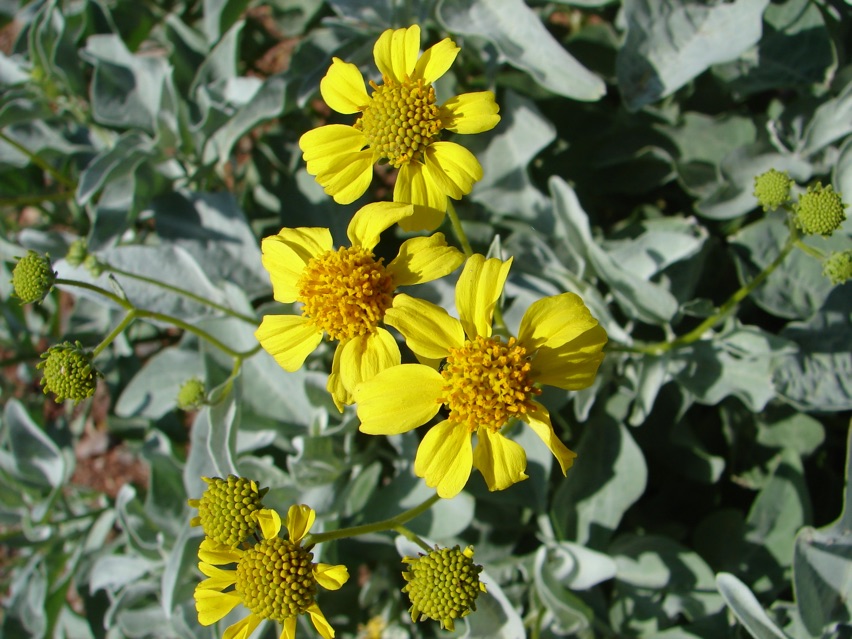
The springtime bloom of the brittlebush, Encelia farinosa, can turn a brown desert landscape into a sea of yellow. Their name comes from how brittle and easily broken their stems become during the hot, dry summer. But when winter rains result in their leafing out and blooming, the small yellow flowers of brittlebush create a floral paradise. Brittlebush are also members of the sunflower family, Asteraceae, and their stems contain a fragrant resin that was a useful substance for the indigenous people who made their homes in the Sonoran Desert.
Creosote bush
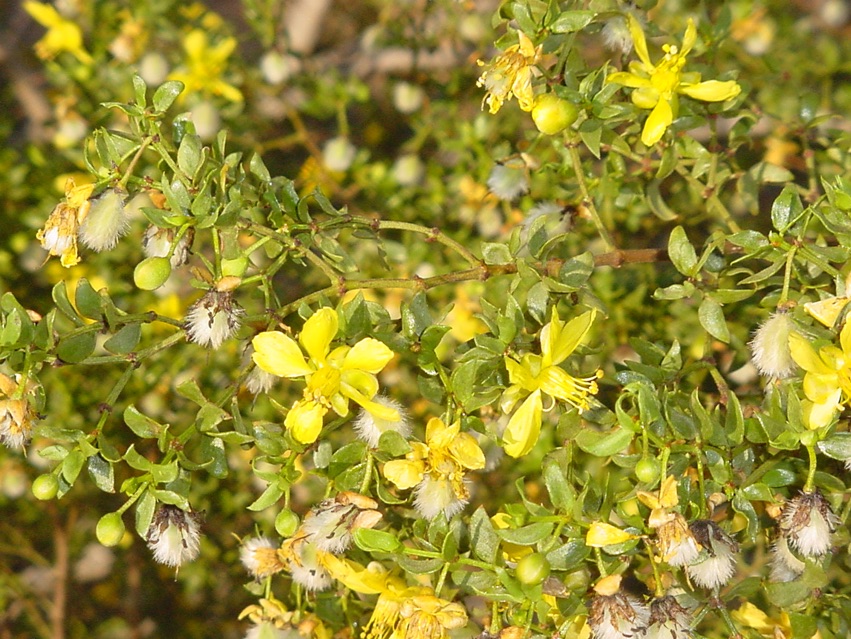
Another shrub that blooms spectacularly during the desert spring is the creosote bush, Larrea tridentata. The bright yellow flowers and white, fluffy seed pods are a beautiful contrast to the plant's waxy green leaves. Creosote bushes have adapted to the dry desert environment by opening their stomatas only to "breathe" in carbon dioxide in the early morning hours. This allows for the lowest possible loss of water to escape through the stomatas. It is the oils on the leaves of the common creosote bush that creates the unique "smell of rain" in the Sonoran Desert, as the rainwater mixes with these volatile oils. These leaf oils are a mixture composed mostly of terpene (found in pines), limonene (found in citrus) camphor (found in rosemary), methanol and spices known as 2-undecanone.
Chuparosa shrub
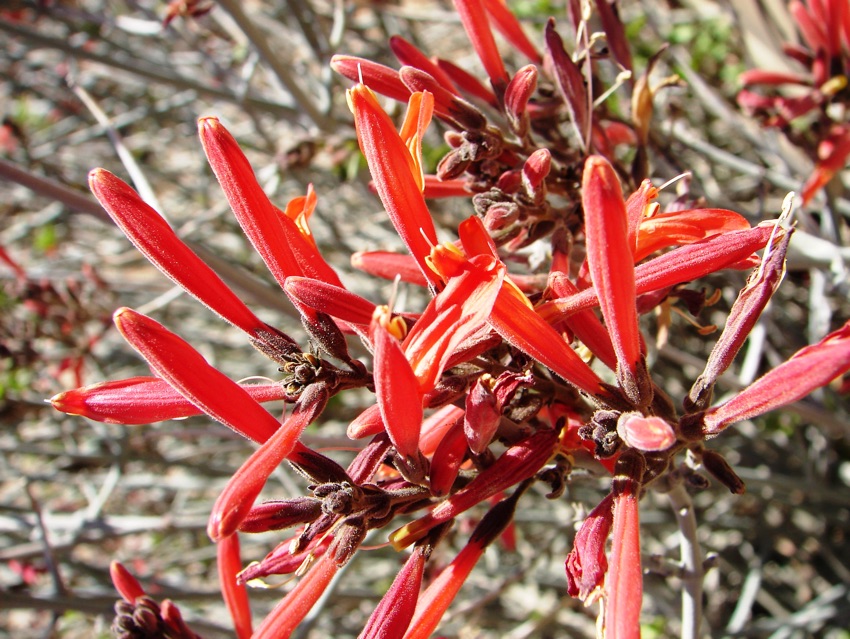
One of the showier of Sonoran Desert spring bloomers, with its red tubular flowers, is the chuparosa shrub, Justicia californica. Chuparosa favors the sandy washes and low rocky hillsides so common across the desert landscape. Large chuparosa can grow upwards of 4 feet (1.2 m) tall and 6 feet (1.8 m) wide. The brilliant red flowers are nearly 1.5 inches (3.8 cm) long and are a favorite food source for the many species of hummingbirds that frequent the desert before the return of the extreme summer heat. Chuparosa is sometime known as beloperone as well as the hummingbird bush.
Sign up for the Live Science daily newsletter now
Get the world’s most fascinating discoveries delivered straight to your inbox.
Desert globemallow
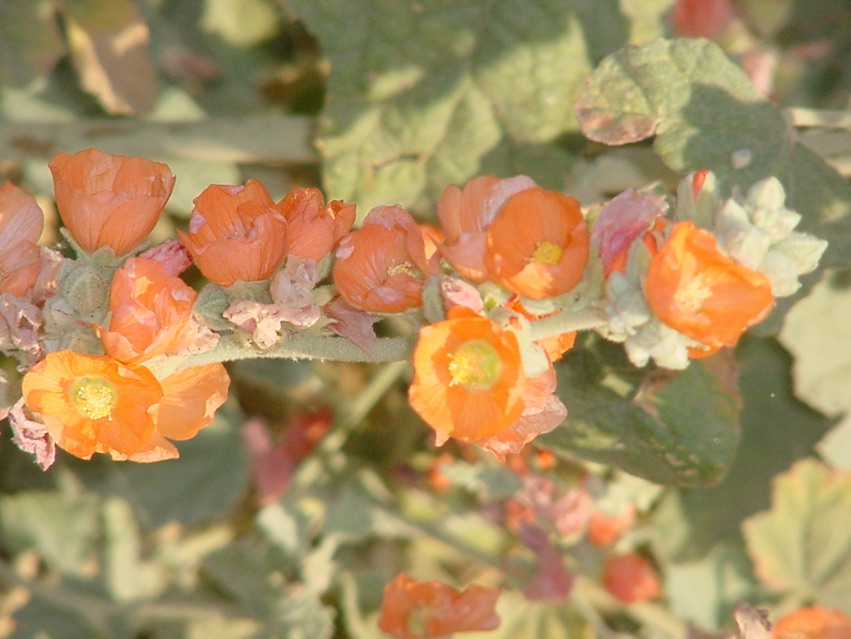
Desert globemallow, Sphaeralcea ambigua, is one of the few Sonoran Desert bloomers that can continue to bloom through the hot summer desert temperatures. The perennial shrub grows upward of 3 feet (.9 m) in height and blooms with clusters of apricot-orange flowers beneath the tips of the stems. This is one of the most drought-tolerant of desert shrubs and prefers dry, rocky soils. Because the desert globemallow blooms from February through November, it is a constant source of pollen and nectar for desert insects and birds. The indigenous people of the Sonoran Desert used globemallow as a medicine plant to help with cough, flu, diarrhea and snakebites.
Desert fairy duster
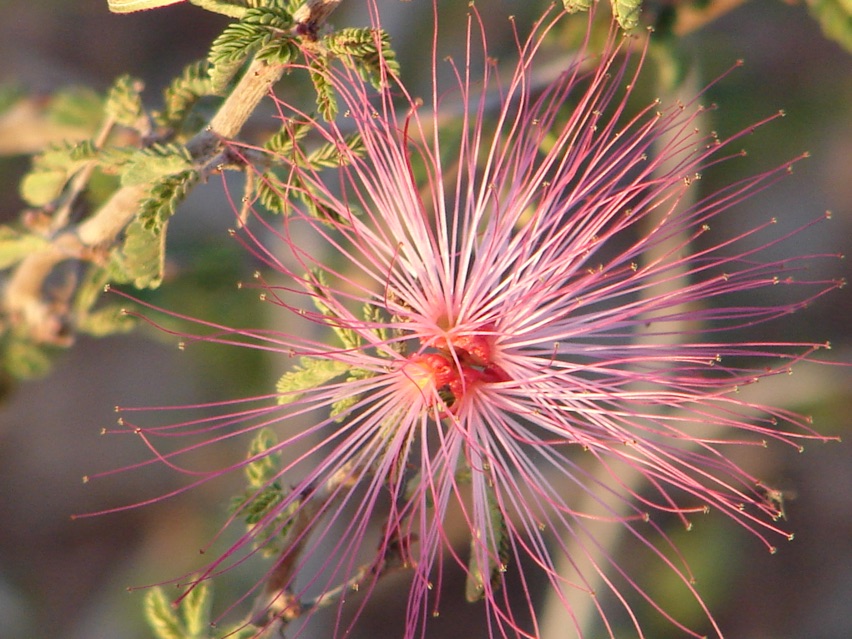
The ornate flowers of the desert fairy duster, Calliandra eriophylla, add a delicate beauty to this normally harsh desert environment. This thornless, perennial shrub commonly blooms from February through May and is a favorite food for desert animals, birds and insects. This evergreen plant can reach 5 feet (1.5 m) in height. The many, long stamens of the pinkish to reddish flowers are a favorite food source for hummingbirds.
Foothill Palo Verde
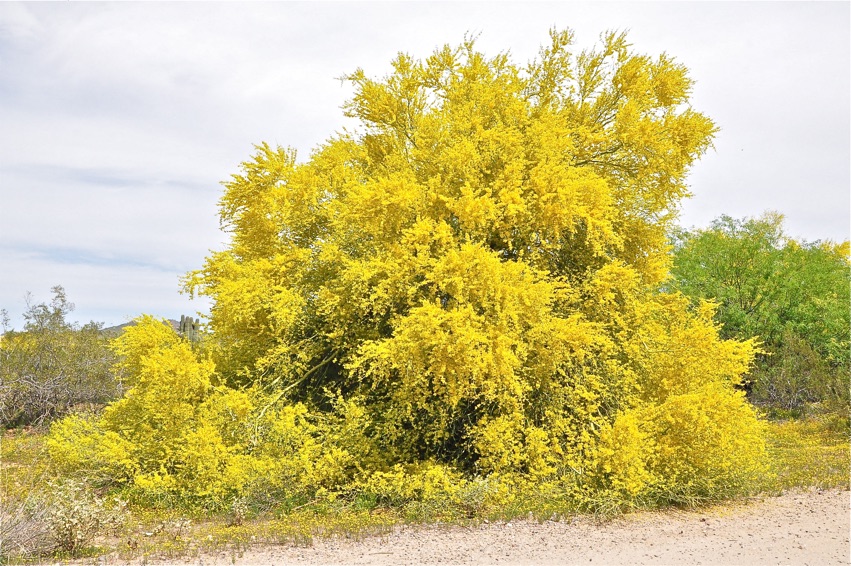
The three most common, indigenous trees of the Sonoran Desert also take part in the annual explosion of color. Shown here is a foothill palo verde tree, Parkinsonia microphylla, in its full springtime bloom. During the blooming season, the green bark of the palo verde tree is totally obscured by the thousands of brilliant yellow flowers. The flowers are a favorite of desert bees, and the thousands of seed pods that are produced are an invaluable source of food for desert mammals, birds and reptiles.
Mesquite trees
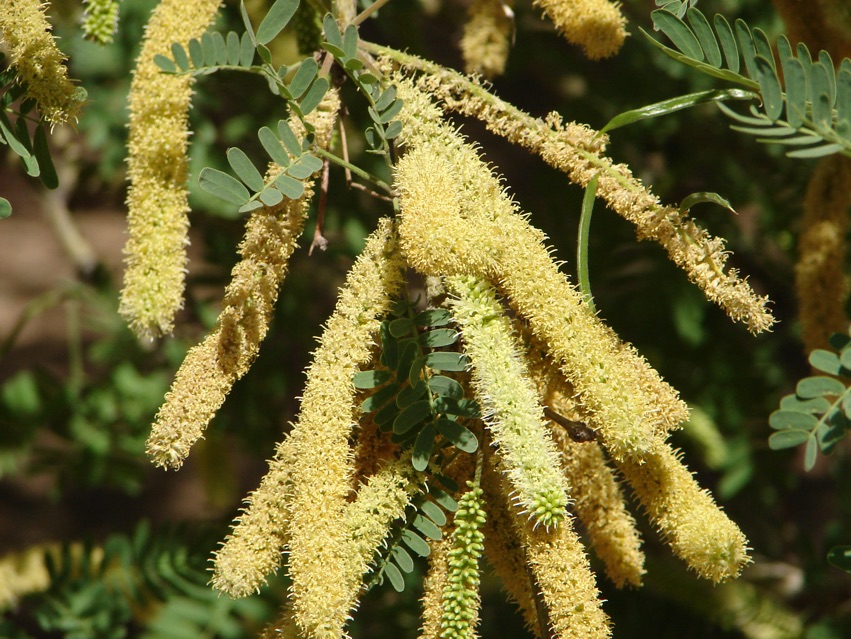
Although not as showy as the bloom of the palo verde tree, the mesquite trees of the Sonoran Desert add to the springtime bloom. Shown here are the flowers of a velvet mesquite tree, Prosopis velutina. All three of the indigenous trees are members of the legume family (Fabaceae) as they all produce a large nutritious seed pod. Mesquite beans are known to remain viable for years and were once gathered and used as a major source of food for the region's draft animals. Mesquite leaves and bark were used for medicinal purposes by native people and early settlers.









